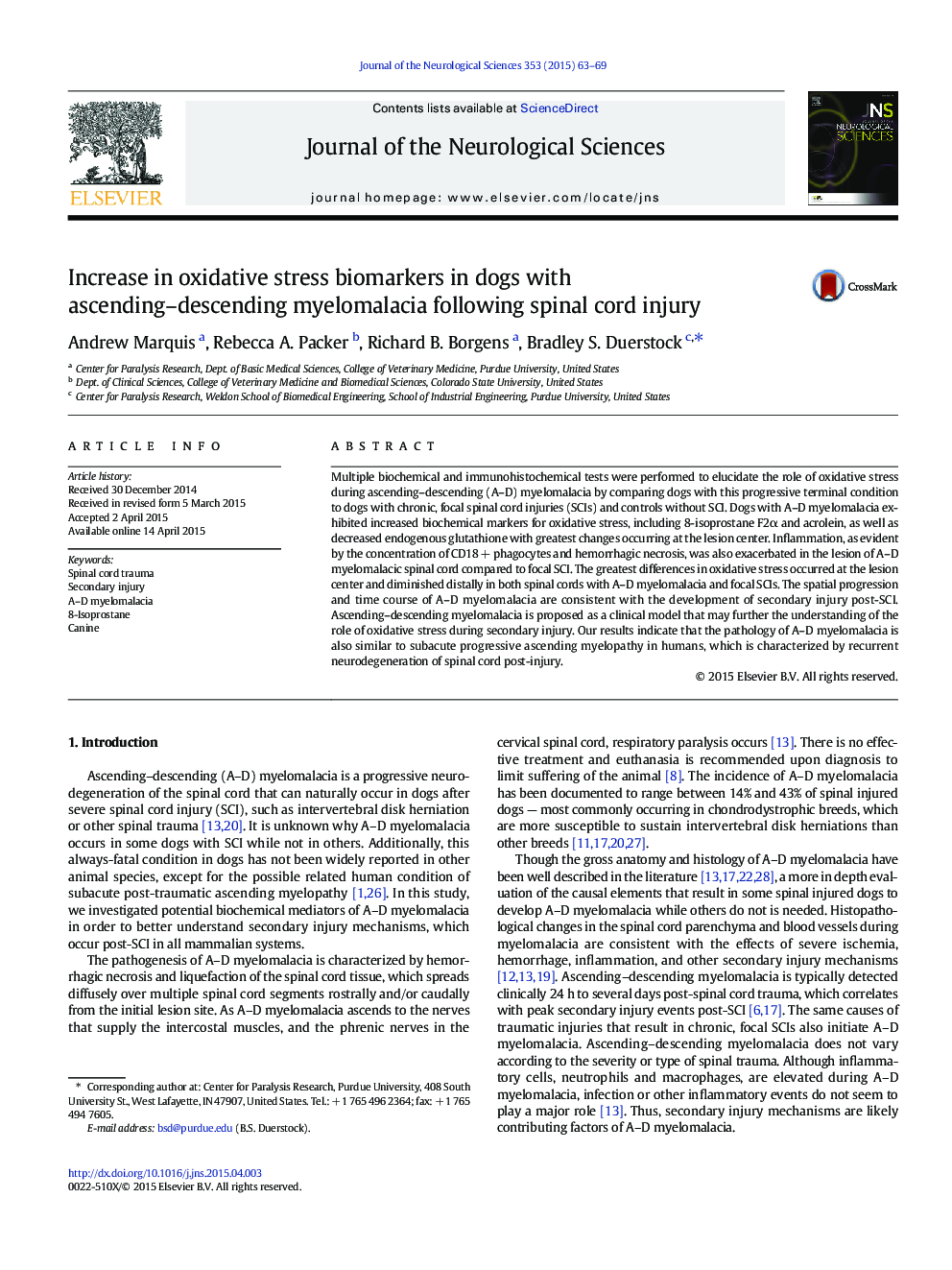| Article ID | Journal | Published Year | Pages | File Type |
|---|---|---|---|---|
| 8275931 | Journal of the Neurological Sciences | 2015 | 7 Pages |
Abstract
Multiple biochemical and immunohistochemical tests were performed to elucidate the role of oxidative stress during ascending-descending (A-D) myelomalacia by comparing dogs with this progressive terminal condition to dogs with chronic, focal spinal cord injuries (SCIs) and controls without SCI. Dogs with A-D myelomalacia exhibited increased biochemical markers for oxidative stress, including 8-isoprostane F2α and acrolein, as well as decreased endogenous glutathione with greatest changes occurring at the lesion center. Inflammation, as evident by the concentration of CD18 + phagocytes and hemorrhagic necrosis, was also exacerbated in the lesion of A-D myelomalacic spinal cord compared to focal SCI. The greatest differences in oxidative stress occurred at the lesion center and diminished distally in both spinal cords with A-D myelomalacia and focal SCIs. The spatial progression and time course of A-D myelomalacia are consistent with the development of secondary injury post-SCI. Ascending-descending myelomalacia is proposed as a clinical model that may further the understanding of the role of oxidative stress during secondary injury. Our results indicate that the pathology of A-D myelomalacia is also similar to subacute progressive ascending myelopathy in humans, which is characterized by recurrent neurodegeneration of spinal cord post-injury.
Related Topics
Life Sciences
Biochemistry, Genetics and Molecular Biology
Ageing
Authors
Andrew Marquis, Rebecca A. Packer, Richard B. Borgens, Bradley S. Duerstock,
